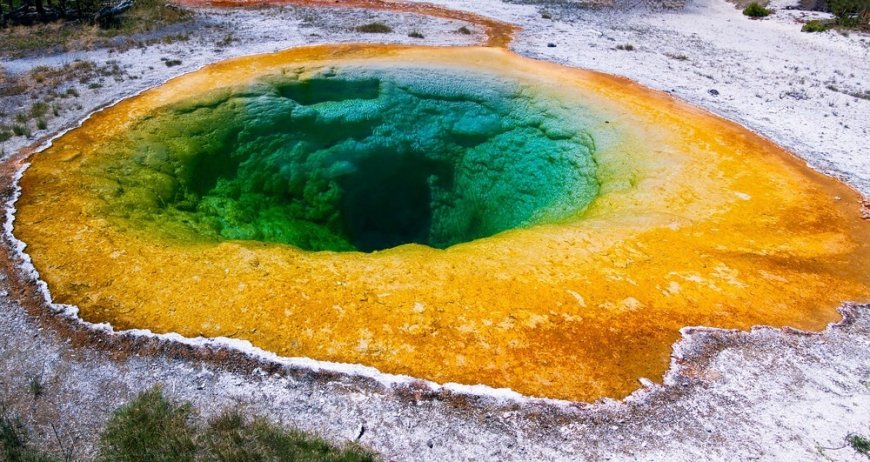Exploring the Potential of Extremophiles for Bioprospecting
Extremophiles are organisms thriving in extreme conditions, offering bioactive compounds with applications in medicine, agriculture, and industry. Bioprospecting for these compounds must follow ethical guidelines. Researchers are focusing on extremophiles in harsh environments like permafrost and hydrothermal vents for novel bioactive substances. Leveraging extremophiles' unique adaptations can lead to innovative solutions in biotechnology and medicine.

An extremophile is an organism that thrives in extreme environmental conditions. MacElroy introduced the term in 1974. Extremophiles, particularly microorganisms, have garnered significant interest for their potential in biotechnological and biomedical fields. They generate bioactive compounds such as antibiotics, antioxidants, and cytotoxic agents, which have various applications in medicine, agriculture, industry, and environmental cleanup. However, bioprospecting for beneficial products from extremophiles must adhere to ethical guidelines to minimize potential environmental consequences.
In the search for novel bioactive substances such as antimicrobial and anticancer agents, researchers are increasingly focusing on extremophiles that inhabit harsh environments like permafrost, hydrothermal vents, hot springs, and soda lakes.
These organisms can endure extreme temperatures, water activity, salt levels, pH, oxygen concentration, and pressure. The study and utilization of these bioactive compounds from extremophiles is known as bioprospecting, which holds great promise for biotechnology and medicine.
One notable example is ectoine, derived from organisms in high-salinity environments, widely used in skin care products. Extremophiles exhibit unique adaptations, including temperature extremes (-2°C to 20 °C or 55 °C to 121 °C), salt tolerance (2-5 Molar), and pH stability (above 8 or below 4), enabling them to survive in harsh conditions. By leveraging these traits, new pathways can be created for innovative solutions to pressing biotechnological and biomedical challenges.
One of the most exciting applications of extremophiles is in medicine. These microorganisms produce bioactive compounds with anticancer, antibacterial, antifungal, and antiviral properties. For example, certain extremophiles from deep-sea hydrothermal vents yield enzymes with significant activity at elevated temperatures, making them valuable tools in molecular biology.
Antibiotics such as penicillatide B and fusaperazine F from extremophiles have shown efficacy against drug-resistant pathogens such as methicillin-resistant Staphylococcus aureus, offering promising solutions to multidrug-resistant infections.
By cloning genes from extremophiles involved in stress responses, scientists can create genetically modified crops with enhanced resilience to environmental stresses like drought and salinity. For instance, the H(+)-pyrophosphatase gene from Thellungiella halophila has been successfully cloned and expressed in tobacco plants to improve salt tolerance. This approach can enhance crop productivity through the stress response mechanisms of extremophiles.
Sustainable biofertilizers derived from extremophiles can enhance soil fertility and nutrient absorption in crops, as seen with the growth-promoting effects of Arthrospira platensis on papaya and petunia.
Enzymes sourced from extremophiles present numerous opportunities in the food, textile, and beverage industries. Extremophilic enzymes, such as lipases and proteases, are utilized in detergents due to their effectiveness under extreme pH and temperature conditions, leading to efficient and eco-friendly cleaning solutions.
These enzymes also enhance aroma and flavor in food processing. Glucosidases from extremophiles have been shown to improve the aroma of wine and fruit juices. Moreover, extremophiles are being investigated for their bioremediation potential, which involves using living organisms to decontaminate polluted sites. Certain extremophiles can metabolize toxic substances and flourish in contaminated environments, aiding in the restoration of ecosystems.
Despite their vast potential, the exploration of extremophiles raises ethical and conservation concerns due to their delicate habitats. Implementing strict ethical standards and sustainable practices during bioprospecting efforts is crucial.
Irresponsible practices, such as disregarding regulations and the rights of local communities or overexploiting natural resources, can severely disrupt and damage ecosystems.
A prime example is the Rose Garden hydrothermal vent, where repeated disturbances have led to the loss of original species and the emergence of new lava formations and fauna.
Bioprospecting extremophiles represents a promising frontier for scientific discovery and technological advancement. By balancing scientific exploration with environmental stewardship, we can unlock the full potential of extremophiles while ensuring sustainability.
According to the source: News-Medical.
What's Your Reaction?
 Like
0
Like
0
 Dislike
0
Dislike
0
 Love
0
Love
0
 Funny
0
Funny
0
 Angry
0
Angry
0
 Sad
0
Sad
0
 Wow
0
Wow
0



















































































































































